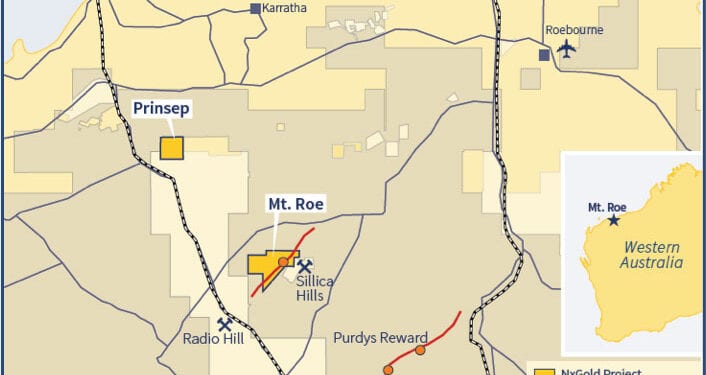But Looking To Divest Western Australian Gold Project
Vancouver-based International Consolidated Uranium Inc. (TSXV: CUR) has turned up some promising final results from work programmes at the Mt. Roe Gold Project in the Pilbara Region of Western Australia.
The programme was designed to follow up on some key targets on the Sholl and Prinsep tenements. A total of 148 samples (five silts, 139 soils, seven rocks) were collected during this programme.
High-grade silver, copper and zinc values were recorded in rock sample SAR002, taken from the MAG silver target area, returned values of 2,057 g/t Ag, 1.1% Cu and 1.03% Zn.
However, CEO Philip Williams says the company’s focus remains on uranium, with four uranium projects in two countries secured under option agreements so far in 2020 with plans to continue to grow the portfolio.
Mr Williams said the company is now evaluating options for its non-core gold assets, with both Mt Roe in Western Australia and Kuulu in Nunavut remaining attractive projects for divestiture, JV or spin-out.
“This is quite an exceptional result from the recent sampling program at Mt Roe,” Mr Williams aid.
“Mineralisation of this tenure is not unprecedented in the area with historical production at the nearby Elizabeth Hill Silver Project, according to Alien Metals, totalling approximately 16,800 tonnes grading 2,195 g/t Ag (70.24 oz/t Ag) generating 1,170,000 ounces, including some very large specimens of native silver.
“With our transition to leading global consolidator of uranium project gaining traction with investors and counter parties alike our gold projects remain non-core. Today’s results highlight the strong potential of Mt Roe and put the company in good position to deliver a favourable outcome to our shareholders on divestiture of the project.”
The work programme on the Sholl and Prinsep tenements included work on a structure hosting significantly anomalous silver values, expanding two soil grids on inferred property scale structural corridors and further definition of a drainage basin using silt sampling.
The MAG silver target area is currently a poorly defined shear zone corridor that had initial prospecting samples return strong assay values.












